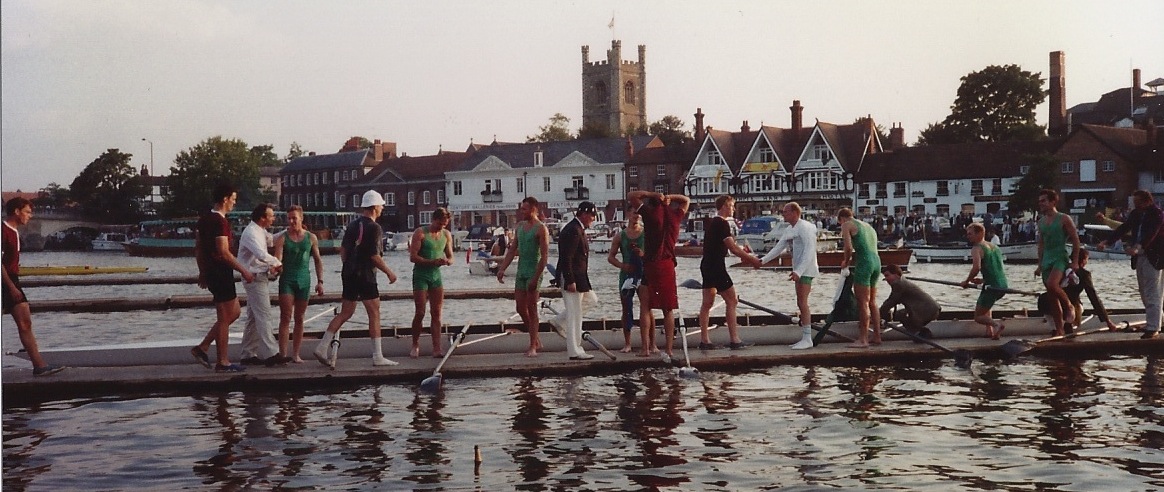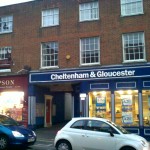Updated 23 July 2014 Thomas Coleman (c 1796-1877) a noted racehorse trainer moved to St Albans around 1820 and became licensee of the Turf Hotel at 8 Chequer Street. Under his stewardship, the Turf became renowned for its “good chef, choice cellar and, especially welcome after a long day in the saddle, the rare luxury of a hot bath.”
Like many landlords of the period, Coleman was an entrepreneurial spirit who organised a variety of sporting events to attract custom. In 1829, he started organising flat races on Nomansland Common on the road to Wheathampstead, to the north of St Albans.
The following year, Coleman staged the first Great St Albans Steeplechase – considered by many to be the first steeplechase in England. (The sport and its name date back to a race between Buttevant and Doneraile church steeples in County Cork, Ireland, in 1752.)
According to Robert Grimston, son of local landowner James Walter Grimston, 1st Earl of Verulam (whose family was later to negotiate a lease with Sam Ryder for the extension of the Verulam Golf Club), the race was instigated by officers of the 1st Regiment of Life Guards while dining at the Turf. One theory suggests that the officers may have encountered steeplechasing while on leave in Ireland. An alternative theory credits the Hertfordshire Militia, which had served in Ireland from 1811 to 1813, as having suggested the race.
Although organised from St Albans, the first race was actually in Bedfordshire, between Harlington Church, 18 miles north of the Turf Hotel, to the obelisk in Wrest Park.
Later races were centred on Nomansland Common, which lies between St Albans and Wheathampstead. Some may have been an “out-and-back” course between the Turf and the Common.
By 1834, Coleman’s organisational skills had made the Great St Albans one of the sporting highlights of the year, attracting horses and riders from all over the country. The 1834 race itself was won by the controversial cricketer and hunter, the Rev. Lord Frederick Beauclerk. He was famous for never allowing his clerical duties as vicar of the St Albans parish of St Michael “to interfere materially with the claims of cricket”. He had entered the race as ‘Mr Band’ to avoid displeasing his bishop!
William Lynn, proprietor of the Waterloo Hotel in Liverpool, was so impressed by Coleman’s success that he decided to venture into steeplechasing himself. A consortium led by Lynn had already laid out a race course and built a grandstand on land leased from Lord Sefton in the Liverpool suburb of Aintree. Flat race meetings had successfully been staged there since July 1829. Assisted by Captain Martin Becher, Lynn staged the first steeplechase at Aintree in 1835.
Initially, Lynn and his Grand Liverpool Steeplechase struggled to compete with Coleman until rising costs and growing resistance to the disruption the race imposed on St Albans brought an abrupt end to the Great St Albans Steeplechase after the 1838 race. Aintree staged what is officially considered to be the first Grand National on Tuesday, 26 February 1839.
However, Coleman’s influence was profound – even if it is now largely forgotten: within a decade of the first Great St Albans, more than sixty steeplechases were being held across England.
Given its steeplechasing heritage, it was perhaps fitting that for several years up to 2014, the Turf Hotel was the St Albans branch of the Cheltenham & Gloucester!
My thanks to the Revd Stephen J Williams of Harlington Church whose extensive research into the Great St Albans has cut through the confusion over the venues for the races that was reflected in earlier versions of this post. The history of the National as described in Visit Harlington’s guide to the village is based on Stephen’s work.
View The Great St Albans: the first steeplechase in England in a larger map
As well as horse racing, Nomansland Common was a popular venue for a variety of other sporting contests and wagers including hare coursing, shooting matches and prize fighting.
The last prize fight on the Common was organised by Coleman in 1833. By all accounts, this was a brutal encounter between Simon Byrne, the Irish champion and ‘Deaf’ Burke. Byrne was eventually knocked out after a marathon battle – which lasted three hours and 16 minutes according to one account. When he died three days later, Burke and his seconds were charged with manslaughter. The defendants were acquitted on medical evidence: a surgeon testified that the death had not been caused by the boxing injuries.
This contemporary broadside report placed the fight 150 miles from London up the Great North Road. At the time, prize fights were often stopped by local magistrates – or the interfering ‘beaks’ referred to in the second paragraph. The whereabouts of a fight would kept secret until the last possible moment and would only be made known by word-of-mouth at London’s sporting clubs or at pre-arranged meeting points on the road. By reporting an inaccurate fight location, the publisher may have been attempting to protect a successful venue for future use.






2 thoughts on “St Albans, the Grand National and a fatal fist fight”
Good Morning
Iam wondering if there is any plaque in the area of the Old Turf Hotel in Chequer Street St. Albans (Now The TSB) in realation to the St Albans Steeplechase of 1832. I am interested in this from both a historical and philatelic interest in Horse Racing.
Hi Stuart
Thanks for your email.
There isn’t any sort of recognition on the Old Turf Hotel at present.
(The town has yet to permanently commemorate its other great contribution to sport – the Ryder Cup – although a fund raising campaign is underway to erect a statue of Sam in the town centre.)
Both may get more recognition when the current proposal to relocate the town museum to the Old Town Hall (a stone’s-throw from the Turf Hotel) comes to fruition.
I understand there is a plaque to the Great St Albans Steeplechase in the village of Harlington – where the race actually took place. “Visit Harlington” has produced a leaflet with more information on the village’s role in the race which is apparently available in the village. (I was sent a copy by the local vicar on whose research the section on the national is based.)
Best wishes,
Ian Volans